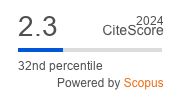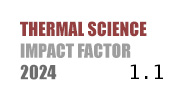ABSTRACT
Altering the surface cover of an area causes the change in the environment. By erecting buildings change in the flow of energy and matter through the urban ecosystems occurs creating multiple environmental problems. Built areas exert considerable influence over their local climate, amplifying problems such as heat waves, air pollution, and flooding. Greening the building envelope these problems can be partially mitigated. By combining nature and built areas in their designs, architects and urban planners can respond to these serious human health and welfare issues and restore the environmental quality of dense urban areas. Green living systems are not the only solution for new designs. Retrofitting existing buildings by altering the buildings' surficial properties can reduce buildings' energy consumption in case of older buildings with poor existing insulation. Implementation of green living systems in the building envelope, greening horizontal surfaces with intensive and extensive green roofs or using vegetation in vertical greening systems for façades, is a strategy that provides ecological, economic, and social benefits. This review paper presents collected evidence of effects and explores the important role that the green living systems can play in the dense urban areas. Benefits such as heat island amelioration, reduction of buildings energy consumption, air quality and indoor and outdoor comfort conditions improvement, stormwater management and improved water run-off quality, will be mainly considered. [Project of the Serbian Ministry of Education, Science and Technological Development, Grant no. III42008]
KEYWORDS
PAPER SUBMITTED: 2017-05-31
PAPER REVISED: 2018-03-01
PAPER ACCEPTED: 2018-06-13
PUBLISHED ONLINE: 2018-09-22
THERMAL SCIENCE YEAR
2018, VOLUME
22, ISSUE
Supplement 4, PAGES [S1033 - S1045]
- Peng, L.L.H., Jim, C.Y., Green-Roof Effects on Neighborhood Microclimate and Human Thermal Sensation, Energie, 6 (2013), pp. 598-618
- Yang, X., et al., Temperature Decrease and Moisture Increase Effects of Parthenocissus quinquefolia in Vertical Greening, Chinese Journal of Urban Environmental Ecology, 20 (2007), 6, pp. 1-3
- Berardi, U., et al., A Critical Analysis of the Environmental Benefits of Green Roofs, Applied Energy, 115 (2014), pp. 411-428
- Castleton, H.F., et al., Green Roofs; Building Energy Savings and the Potential for Retrofit, Energy Building, 42 (2010), pp. 1582-1591.
- Vasov, M., et al., Towards the Reconstruction of Thermal Performances of Flat Roofs, Proceedings, International Conference on Technics, Technologies and Education ICTTE, Yambol, Bulgaria, 2014
- Ascione, F., et al., Green roofs in European Climates. Are Effective Solutions for the Energy Savings in Air-Conditioning, Applied Energy, 104 (2013), pp. 845-859
- Kosareo, L., Ries, R., Comparative Environmental Life Cycle Assessment of Green Roofs, Building and Environment, 42 (2007), pp. 2606-2613.
- Wong, N.H., et al., Investigation of Thermal Benefits of Rooftop Garden in the Tropical Environment, Building and Environment, 38 (2003), pp. 261-270
- Feng, C, et al., Theoretical and Experimental Analysis of the Energy Balance of Extensive Green Roofs, Energy and Buildings, 42 (2010), pp. 959-965
- Niachou, A., et al., Analysis of the Green Roof Thermal Properties and Investigation of its Energy Performance, Energy and Buildings, 33 (2001), pp. 719- 729
- Akbari, H., Konopacki, S., Energy Effects of Heat-Island Reduction Strategies in Toronto, Canada, Energy, 29 (2004), 2, pp. 191-210
- Liu, K.Y., Baskaran, B.A., Thermal Performance of Green Roofs Through Field Evaluation, NRCC-46412, National Research Council, Canada, Ottawa, Ontario, 2003, pp. 1-10
- Dimitrijević, D., et al., Green Living Roof Implementation and Influences of the Soil Layer on its Properties, Thermal Science, 20 (2016),5, pp. S1511-S1520
- Zhao, M., Srebric, J., Assessment of Green Roof Performance for Sustainable Buildings under Winter Weather Conditions, J. Cent. South Univ., 19 (2012), 3, pp. 639-644
- Cheng, C., et al., Thermal Performance of a Vegetated Cladding System on Façade Walls, Building and Environment, 45 (2010), pp. 1779-1787
- Wong, N., et al., Thermal Evaluation of Vertical Greenery Systems for Building Walls, Building and Environment, 45 (2010), pp.663-672
- Gill, S.E., et al., Adapting Cities for Climate Change: The Role of Green Infrastructure, Built Environment, 33 (2007), pp. 115-133
- Berardi, U., The Benefits of Green Roof Retrofits as Local Interventions for Mitigating the Urban Heat Island Effect in Toronto, Proceedings, Regenerative and Resilient Urban Environments, Toronto, 2016, pp. 1-10
- Santamouris, M., Cooling the Cities - A Review of Reflective and Green Roof Mitigation Technologies to Fight Heat Island and Improve Comfort in Urban Environments, Solar Energy, 103 (2014), pp. 682-703
- Villarreal, E., Bengtsson, L., Response of a Sedum Green-Roof to Individual Rain Events, Journal Ecological Engineering, 25 (2005), pp. 1-7
- VanWoert, N., et al., Green Roof Stormwater Retention: Effects of Roof Surface, Slope, and Media Depth, Journal of Environmental Quality, 34 (2005), pp. 1036-1044
- Uhl, M., Schiedt, L., Green Roof Storm Water Retention—Monitoring Results, Proceedings, 11th Int. Conf. on Urban Drainage, Edinburgh, Scotland, 2008, pp 1-10
- Stovin, V., et al., The Hydrological Performance of a Green Roof Test Bed Under UK Climatic Conditions, Journal of. Hydrology, 414-415 (2012), pp. 148-161
- Carson T. B., et al., Hydrological Performance of Extensive Green Roofs in New York City: Observations and Multi-Year Modeling of Three Full-Scale Systems, Environmental Research Letters, 8 (2013), pp. 1-13
- Hoover, F., An Integrative Analysis of an Extensive Green Roof System: A Case Study of the Schleman Green Roof, Msc thesis, Purdue University, West Lafayette, Indiana, 2013
- Zhang X, et al., Effect of Dust Capturing of Residential Greenland in Beijing, J Beijing Univ Agric, 19 (1997), 4, pp. 12-7
- Clark, C., et al., Optimization of Green Roofs for Air Pollution Mitigation, Proceedings, 3rd North American Green Roof Conference: Greening Rooftops for Sustainable Communities, Washington DC, USA, 2005
- Corrie, C., et al., Optimization of Green Roofs for Air Pollution Mitigation, Proceedings, Third Annual Greening Rooftops for Sustainable Communities Conference, Awards and Trade Show, Washington DC, USA, 2005
- Tan, P.Y., Sia, A., A Pilot Green Roof Research Project in Singapore, Proceedings, Third Annual Greening Rooftops for Sustainable Communities Conference, Awards and Trade Show, Washington DC, USA, 2005
- Yang, J., et al., Quantifying Air Pollution Removal by Green Roofs, Atmospheric Environment, 42 (2008), pp. 7266-7273
- Rosenfeld, A.H., et al., Cool Communities: Strategies for Heat Island Mitigation and Smog Reduction, Energy and Buildings, 28 (1998), pp. 51-62
- Getter, K.L., et al., Carbon Sequestration Potential of Extensive Green Roofs, Environmental Science and Technology, 43 (2009) 19, pp. 7564-7570
- Li, J., et al., Effect of Green Roof on Ambient CO2 Concentration, Build Environment, 45 (2010), 12, pp. 2644-2651
- Balaras, C.A., et al., European Residential Buildings and Empirical Assessment of the Hellenic Building Stock, Energy Consumption, Emissions and Potential Energy Savings, Building and Environment, 42 (2007), 3, pp. 1298-1314

